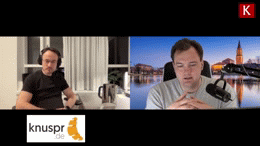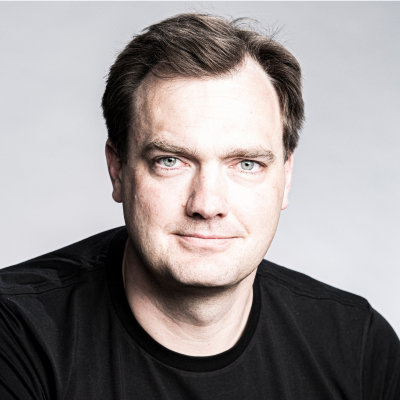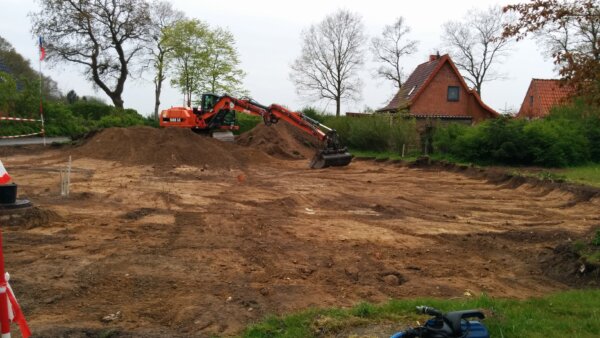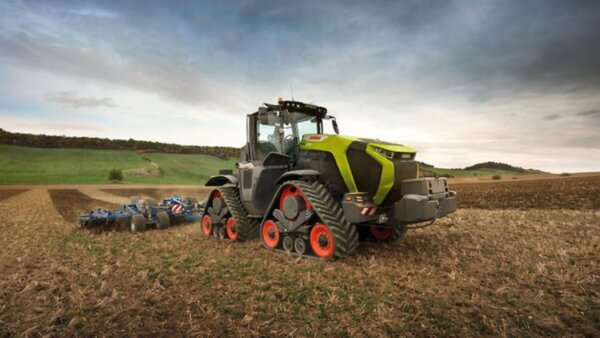Pünktlich zu Weihnachten spricht der Knuspr CEO Erich Comor über die Strategie seines Lieferdienstes, der zum Zeitpunkt der Aufnahme schon über 2.000 Bestellungen am Tag im Münchner Raum ausfährt und täglich hunderte neuer Kunden gewinnt. Kaum ein anderes Lieferbusiness bietet so ein breites & regionales Sortiment an – kaum jemand wächst mit so einem Sortiment so stark wie Knuspr. Wie machen sie das? Wohin geht die Reise für Knuspr? Wann verdienen sie damit Geld? Alle Infos dazu im Podcast
E-Food-Expansion mit Erich Comor, CEO von Knuspr
Der unangebrochene Schoko-Weihnachtsmann schaut noch Mitte Januar genauso vorwurfsvoll drein wie die verbleibenden Medjool-Datteln in der halb mit Plastikfilm bedeckten Styroporschale… Ja, man kennt es nicht anders um den Jahreswechsel herum: Im Dezember wird reichlich aufgetischt und genüsslich vertilgt – und trotzdem bleibt noch viel Essen übrig! Denn im Januar muss man noch eine Menge Verdauungsarbeit leisten.
Nicht viel anders verhält es sich bei Kassenzone: Zum Jahresende wurde das Thema E-Food großgeschrieben, aber erst jetzt kommen wir dazu, die reichliche Bescherung mit Lebensmittelthemen angemessen zu bedenken! Kürzlich erst ging die lang ersehnte Transkription vom E-Food-.Jahresrückblick mit Udo „Foodo“ Kießlich online – worin es unter anderem um den in München und Umland rapide wachsenden Lieferdienst Knuspr ging. In dieser Folge handelt Alex nach der Devise „lieber mit den Leuten als über sie reden“ und fragt den CEO vom deutschen Ableger des expansionswütigen tschechischen E-Food-Spielers Rohlik direkt (und auf Englisch) aus.
“The whole notion of there being no margin in the German market is nonsense.”
2:50
Alex: Erich, can you start by introducing yourself and Knuspr?
Erich: Personally, I’m a banker by profession, which you might not expect from someone managing an e-grocery business; but there are actually quite a lot of similarities between online banking and online groceries, as I’ve been explaining to friends and acquaintances who were surprised by my change of industries after 25 years! The focus in both areas is on internet presence, flawless front-ends, and perfect customer service – all built on a strong software architecture.
I started Knuspr just over a year ago now in summer 2020 after the owner of Rohlik, our Prague-based parent company, approached me to oversee the set-up in the German market. “Knuspr” was the name we came up with here in Munich. It took us approximately twelve months to find our warehouse, refit it to our needs, and get the software ready for launch; we started on 4th August 2021.
Alex: So you’re at the four-months mark now, but Rohlik has been going for longer. How big is Rohlik in its home market, the Czech Republic?
Erich: You wouldn’t necessarily expect this from a company which started in a 10-million-inhabitant market, but Rohlik is a global player in its full-scope e-grocery model; we are not just in a limited segment like super-fast delivery or fresh only, and there are only a few market participants worldwide who have mastered this model. Rohlik is one of that few, which is the reason why investors are flocking to it.
(Erich gives a brief account of Rohlik’s history from set-up in 2015 to today. In just five years, Rohlik pushed e-food’s share of grocery sales in the Czech Republic from below 1% to a far-above EU-average 5-6% – and drove its own share of this market to over 70%. In Czech cities served by Rohlik, over 20% of consumers are now shopping for food online, some of the highest market penetrations in Europe. Alex and Erich sketch out a brief market topography for e-food and e-groceries in European markets. The key to Rohlik’s astounding success, says Erich, was that it was the first to offer everything consumers would expect from a supermarket – i.e. not just food – along with products they would usually go to farmers’ markets or specialist stores for.)
9:00
Alex: Currently, there’s a lot of talk about Gorillas and super-fast delivery. You’re not as quick as these services, but you do offer faster delivery than most online supermarkets – within three hours, if I’ve been informed correctly?
Erich: We’re starting this interview at around 6pm. If you order now, you can still get your delivery by 9pm.
Alex: And you’re offering a product range comparable to a standard supermarket?
Erich: No, it’s significantly better! And that is what really differentiates us – and scores particularly high with our customers. As a Knuspr customer in and around Munich, you can do your weekly shop with us and have better options than if you go to your local grocery store. That means you can not only buy everything that you would find at Rewe, EDEKA et al. with us, but also a range of things you can’t get there: meat from the best butchers, bread from the best bakers, the freshest fish and Italian cheeses, as well as – and what we’re really passionate about – fresh fruit and vegetables from local farmers. Harvested in the morning, delivered in the evening! It’s a super-broad but locally-focussed, regionally-driven assortment. And instead of going to a supermarket and then five or six other shops to get your complete shop, you can just get it delivered by us.
Alex: You recently held a public-relations event at your Munich warehouse and these were the figures I heard: 20,000 customers, 1,500 orders a day, basket-size above €80. That’s a very rapid expansion! How did you manage to get all the partners onboarded and running at this speed in just four months? All the other services who have entered the e-food markets use wholesalers…
Erich: That figure of 1,500 orders per day is two weeks out of date, I’m afraid: we’re now at 2,000 a day! But we started to build up our product range around 4-5 months prior to launch because the phenomenal assortment we have simply takes that long. We’re now at around 520 suppliers, and more than 30% of them are local, i.e. within a few kilometres of Munich. What makes these suppliers so keen to work with us is the way we – at a stroke, almost – enlarge their market from those who shop at their local store to potentially everybody in and around Munich (population approximately 2 million).
(Erich expands on the philosophy behind Knuspr’s local and regional focus. Every year, thousands of small farms go out of business, primarily because large retailers cannot accommodate them as suppliers.)
15:10
Alex: How do you support local producers in terms of availability and scaling? Surely it’s a big step up for a local producer to suddenly find themselves faced with the huge amount of additional demand you provide. After all, a local butchers can only butcher so many cattle and a local baker can only bake so many loaves… How can they scale up?
Erich: The beauty of it is that they don’t have to scale up! They only need to go as far as they want to and feel comfortable with. Just two weeks ago, I was talking to a cattle farmer named Brandl, and he said that he wanted to scale up; I told him not to do it too fast so that he doesn’t lose what makes his products so special. What is more, we know a lot about our customers’ dietary preferences, so we can target the small-scale producers’ ranges at the right people. After all, not everybody is interested in a very specific type of beef. That might only be 500 out of 20,000. For other people, other local producers might be of more interest. So we target clusters of customers with the most relevant propositions from local producers. One thing we notice is that customers are very keen to reward their local producers with a fair price.
Alex: So let’s take Farmer Brandl. (As you may know, I once kept cattle myself!) It’s hard to scale because most people only want rump steaks, but there’s all sorts of other cuts. I’ve checked his website and it says he has a herd of 30-40, which means about 10 cows available to sell on a yearly basis, of which you get around 2, I’d guess. Is there enough for you to sell all parts of the animal? I guess I’m talking “nose to long-tail”… And can you give him long-term assurances about how many cattle you will take over the next, say, five years?
Erich: Yes, we can sell a full range – and the fact that Farmer Brandl is thinking of expanding and I’m the one telling him not to go too fast says a lot here. In terms of “long-tail” items: we have very little shrink. There is hardly any food lost on our site, partly because we see clusters of customers and target them. Some customers only want filet steaks, but others are interested in flank steaks, too, or even other parts of the cow. And that’s despite the fact that our target group is actually quite homogenous.
Another point is that we actively encourage customers to buy food before we have to dispose of it. We have a category called “Rette Lebensmittel!” – “Save food!” – with a range of items which look likely to expire before they can be sold. Although we offer a discount, that isn’t customers’ primary motivation: in our target group, people are concerned about reducing waste.
And on top that, our warehouse is on an industrial estate where our staff of 600 doesn’t have a lot of food options. So we operate our own food truck and use food just before its sell-by date. It’s great, restaurant-quality food and I go whenever I can!
(Alex is delighted: for years now, he’s been looking for success stories where regional food is connected to regional demand online. But: “It sounds too good to be true. It’s not that I don’t trust you: I just need more detail.”)
23:40
Alex: Guide us through the ordering, procurement, and delivery process. Is it a pull system (customer orders, you pass on the order) or how else do you plan and manage your inventory? And how do you run your delivery operation? And how do you do this within the margin cap inherent in groceries (this isn’t fashion, after all…)
Erich: We have two sets of prices. For everything that can be bought elsewhere, we have competitive prices. We have comparison engines to make sure that we are at the same level not only as Rewe and EDEKA, but also Amazon Fresh. In technical terms, we only match the online price, but in most cases except special offers, retailers like Rewe offer the same prices online as in store, so this ensures that we are competitive. For non-food items, we also peg drugstores like DM.
For local and regional producers and farmers, we have fair prices. You can’t usually buy their products online elsewhere or in supermarkets, so we work directly with the suppliers to set the right price. Our raison d’être is, after all, to keep and support as many local businesses as possible. If we didn’t have enough of the specialist suppliers who make our product range so special in comparison to the big supermarkets, we would be just a copy of Amazon Fresh! So our focus on fair prices for local and regional suppliers is not just talk, but a critical element of the business model. Also, this isn’t about short-term gain: Rohlik has been operating like this for six years now – and it gets better by the day because our way of working revives access for small producers to big markets without forcing them to scale up. To give you a feel for what this means: Knuspr currently stocks around 12,000 items and Rohlik is now at roughly 18,000 – with the share for regional products growing over time, even in our small markets (Czech Republic, Hungary, Austria).
To go back to the first part of your question about procurement and logistics, let me start by describing the warehouse. We have five different temperature zones: ambient for dry goods, 0-4°C for meat, 6-8°C for some fruit and veg’, up to 12°C for other, then the deep-freeze and dairy zones. Each of them is on a different inbound timeline due to varying sell-by dates. Typically, that means anywhere between 400 and 800 items being delivered each day, with fresh fruit and vegetables at the highest frequency, followed by dairy and meat.
In terms of orders, what’s important is the speed at which we operate. If you opt for 3-hour delivery, once you place an order in our web application, everything you have selected has to be picked and taken to the packing station in under 45 minutes; it then takes 15 minutes or less to pack your order and no later than two hours before your latest delivery time, the drivers are already leaving our warehouse with your order. Typically, they are carrying 10-12 orders for each route, with an average of 25 items per order. After delivery, the driver returns for the next load – bringing back bottles with deposits on them and our reusable bags.
(With “bottle deposits” as his cue, Alex enquires about customer behaviour vis-à-vis ordering drinks. Online beverages service Flaschenpost, for instance, focusses strongly on water, beer, and soft drinks; do customers also order beverages from Knuspr? Erich confirms that the average order also includes a crate of beer or mineral water.)
31:45
Alex: Let me play devil’s advocate from the point of view of food industry bosses: “Sure, Erich has got a compelling business model from the customer’s point of view, but margins are low and warehouses cost a lot to run – and he has to pick up the bill for the logistics rather than letting the customer drive to the store and do it for him. That will never turn a profit! Especially not paying fair prices to local producers… I hope he at least chargers a delivery fee!”
Erich: Only if you order under €79.00. What I can say is that in our home business in the Czech Republic, we are already turning a bottom-line profit – and have been since year three of scale up. There’s a simple reason for that: we don’t spend billions on pricey logistical infrastructure. We serve the whole Munich conurbation from one 10,000m² warehouse rather than from the dozens of supermarkets we would otherwise need. That represents a significant difference in capital investment.
Another important differentiating factor as seen in our profitable Czech and Hungarian markets is that our average basket size is around four times bigger than that of a standard Rewe or Edeka supermarket. We benchmark them, by the way, because they are our real competitors, not other online players: in Germany, brick-&-mortar stores are still selling close of 99% of the €300 billion grocery market, after all.
Thirdly and finally, while German end prices are indeed extremely competitive (the difference to smaller markets with less competition, like Austria, is quite stark), it is a large market and wholesale prices are also lower. This means that while the German grocery market sees itself as having squeezed margins, actually, the mark-ups are quite reasonable. And when you look at the bottom lines of mega-players like EDEKA, Rewe, ALDI, Lidl, they are phenomenally profitable! The whole notion of there being no margin in the German market is nonsense.
36:00
Alex: You’ve set yourself some ambitious goals – like €1 billion turnover in Germany by 2024. By my calculations, that would be from a projected overall e-food sales figure of €4-7 billion.
Erich: That’s an optimistic whole market forecast; most industry experts expect German e-food sales to be at around €3 billion by then.
Alex: You and Udo are the experts for me! But let’s take advanced regional markets like Berlin or Munich; today, e-food penetration might already be at 5% there; where would you put it in 2024?
Erich: Purely as an educated guess, I would expect cities like that to be at over 10% – i.e. for the market to have doubled in size.
Alex: What will the limiting factor be: demand or supply? Remembering back to the beginning of the Coronavirus crisis rocketed so fast that Ocado even limited basket sizes and you had to wait for weeks for a delivery slot. So will supply be the bottleneck?
Erich: That’s a good question. A model like ours takes some time to scale, dependent as it is on the availability of specifically designed warehouses in the vicinity of major cities; so I do see the speed at which we can scale as a potential limiting factor in our aim to cover all of the urban population in Germany’s tier A cities (and many in tier B) within the next two years. It will take us up to three years to get our service available to 30 million people in Germany in around 10 million households. And outside of built-up areas, it is yet to be seen how our model scales up.
39:25
Alex: In your view, what share will ultra-fast delivery services have of the €7-billion e-food market in 2024?
Erich: Just for the record: I really don’t think it will hit €7 billion in 2024; I work on an assumption closer to €4-4.5 million. In any case: I often get asked how we, delivering within three hours, compete with services which deliver in 30 minutes or less. My answer is that they are two different markets, and I really don’t know what size the super-fast delivery market will reach. What I am quite sure of is that the market will continue to grow, but that there will only really be one winner.
I compare it to the physical world, where two similar concepts coexist. You have big supermarkets for a family weekly shop stocking everything from fresh meat and vegetables through to household goods like washing powder. You also, however, have corner shops with a very limited range of items, but just two minutes down the road, e.g. for when you’ve forgotten to by milk.
For super-fast services, one way to make their business model profitable will be to open their platform for rapid delivery of non-food items, too – i.e. to become a delivery service also open to third-parties. The other way is to mark up items more heavily, just as convenience stores do today: if you compare their prices to those of the supermarket, they are a lot more expensive, but of course you’re paying for the proximity. These two concepts will coexist. We will never be able to compete on delivery time, but do you need a full weekly shop delivered in 15 minutes? No, you don’t. Two hours is fine.
(Alex, always one to caution that customers opt for quicker wherever possible, warns that it might not be fine if a competitor emerges with the same product range, but faster delivery.)
42:20
Alex: Dutch online supermarket Picnic is expanding into Germany from the other direction. How close is your concept to theirs?
Erich: Picnic differs from us in two aspects which consider crucial. Firstly, its product range is far narrower (below 10,000 SKUs) and this range is just a subset of what EDEKA offers. They don’t have their own assortment like we do, so what they offer is simply some of what you can buy in EDEKA stores. As we see it, if all you can get online what you can get in stores minus some items, your impulse to shop online is significantly weaker.
Secondly, their delivery model prioritises efficiency above flexibility. As you know, as a Picnic customer, you have to wait until your street is assigned a delivery route and then the delivery takes place on a fixed schedule, e.g. Tuesday 4pm. If that suits you, fine. If not, you have to wait until you have an option. What you don’t get to do is to choose when you get your delivery.
Alex: And how about differences in terms of shopping experience? As I understand it, you don’t have a native mobile app, but rather rely on a responsive website. Do you plan on a Knuspr app or do you expect people to do their weekly shop primarily at home on a desktop, laptop, or tablet computer?
Erich: No, we do have a native app, and indeed more than half of our customers use only the app to shop with us. In many aspects, our app is phenomenal, and as in many other online businesses, although some customers prefer browser-based options, the app penetration is much higher than I had expected.
(As the business grows, however, Erich explains, he expects the percentage of app use to decline because early adopters tend more towards apps than the broader market segment which follows.)
45:50
Alex: Currently, you’re serving Munich from one warehouse. Does it make sense to open more warehouses in the same conurbation in order to cut delivery miles?
Erich: It absolutely does, and in a city the size of Munich we will definitely need to open a second warehouse, although, right now, I can’t tell you where precisely. As the density of our customer base grows, though, you can expect to see a second warehouse in southern Bavaria within 24 months. Some cities, like Berlin, will even require three sites in the long term, but we’ll start with two. Also, cities in combined metropolitan areas like Cologne, Düsseldorf, and Dortmund might get more than one warehouse, too.
Alex: If I had to hazard a guess about the challenges you are currently facing, I’d say that finding delivery drivers and warehouse staff is one – and that even finding a suitable warehouse site is another. One thing that isn’t a problem, though, is attracting investors. So where are the bottlenecks?
Erich: Your guess is pretty close. Finding warehouse sites is not actually that difficult, but refitting them to our needs is a challenge: getting planning permission and construction permits can be difficult and supply chains for building materials have become unpredictable. Normally, we could go from contract to launch in six months; now, we need to plan nine or even twelve months.
You are also right that finding pickers, packers, and drivers Is not easy. So far, however, we have managed to find sufficient staff. Our driver roles are popular because, as our flagship service, they are paid well, trained properly, and offered stable works; on the other hand, we only recruit drivers who are extremely service-orientated. There’s a clear reason for this: food needs to be delivered reliably, politely, and with a smile; our drivers are our ambassadors. In terms of customer feedback, driver friendliness is a key source of satisfaction – in parallel to our product range.
Alex: How many drivers to you have in Munich right now?
Erich: Around 120 – and growing fast!
Alex: And where, in general, was a Knuspr driver working before? Were they taxi drivers or did you poach from them from Amazon…?
Erich: Some come from standard parcel courier or delivery companies, while many were indeed taxi drivers. We also have a lot of former limousine drivers! You’ll also find a lot of people who used to work in roles like hotel receptionist, restaurant front-of-house, etc. So there’s no particular pattern, but its primarily people from the service industries.
51:50
Alex: Looking at your core Rohlik markets, how loyal are your customers? Is there any churn at all?
Erich: Once the customers pass the fourth purchase, there is nearly no churn after that. It’s the period in between the first and fourth purchases when customers experience our service and make a decision as to whether it suits them or not. After that, churn is almost non-existent. Typically, over 30% become “lifetime customers” and never leave.
Alex: So for what reason do people leave? Do you have any NPS or similar data? Understanding this might help to explain why I see a €7 billion market in 2024 where you only see €4 billion.
Erich: At over 70 points, our NPS is incredibly high; as you know, in our industry, you’re lucky to get 12 or 20. DM tops the charts with 40. So our customers satisfaction is phenomenally high. Then again, there are customers who, as much as they like online shopping, simply consider shopping to be a social experience and who like to go to the store; others have supermarket on the way home from work, so of course it makes sense for them to stop off there. It’s like in any industry: 100% will never switch to online, but there is around 30% of the German market that can be persuaded if the offer is good enough. The only question is whether it takes three, ten, or fifteen years to get there.
(Alex asks if, as the winter drags on and Germany teeters on the brink of another Covid lockdown, Knuspr may be forced to close to new customers as demand rises quickly. Erich is confident that Knuspr will be able to stay ahead of the curve.)
55:45
Alex: A self-interested question towards the end, if I may: what are your expansion plans for the rest of Germany. It’s just that in my region, around Kiel in the north, we don’t have any grocery delivery services at all…
Erich: Our next city is Frankfurt, where we nearly have a warehouse ready. Next up will be Hamburg in the summer, with Cologne and Düsseldorf to follow; we also have two locations lined up in Berlin and may, with a bit of luck, be ready to open there before the end of 2022. We are also prospecting locations in Essen and Dortmund. We can’t be sure of the exact timing, but we will definitely be serving all of these places within the next eighteen months. Stuttgart is planned for after that (we have just found a promising option there) and we will be looking at further cities and regions in due course.
Alex: And you don’t expect staffing to become a bottleneck?
Erich: Not yet, no, but competition for workers will be tight. We are also just now starting to equip our warehouses with a new generation of automation, and that will allow us to expand at the speed I have described without being constrained by labour.
(In view of the lack of data available publically, Alex asks for details about precisely how Knuspr compiles its NPS and customer satisfaction data. Erich explains the metrics: NPS research, order rating (customers rate around 40% of orders on both quality and delivery), and Google Maps reviews. The latter are all, of course, wholly independent publically available! Alex thanks Erich – and reveals his intention to record a podcast with Farmer Brandl in order to verify whether Knuspr really is as supplier-friendly as it seems.)
Dieser Podcast wird unterstützt von Husqvarna Forst & Garten.
Seit 1689 am Markt, fertigt Husqvarna hochwertige Garten- &
Forstprodukte und steht für bahnbrechende Innovationen wie den
weltweit ersten kommerziellen Mähroboter, den Automower®. Mehr unter husqvarna..






